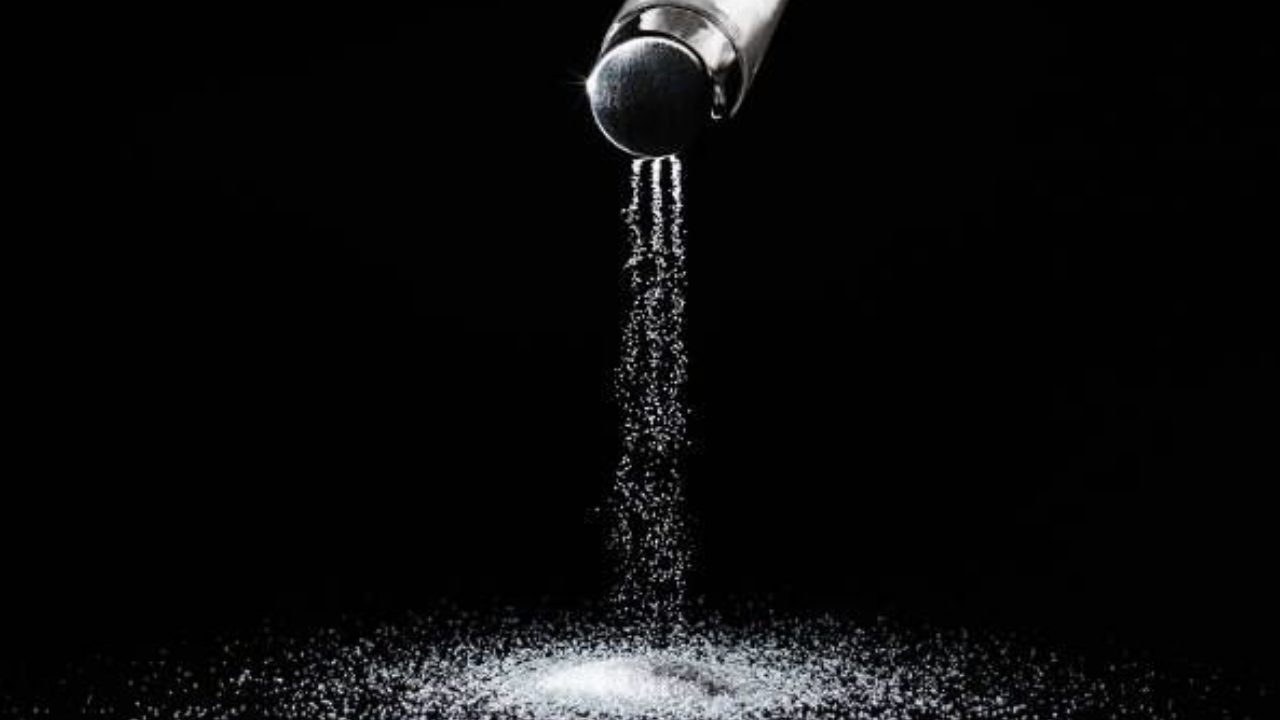Are you familiar with the various types of salt used in cooking? Chemically known as sodium chloride, salt is one of the five basic tastes that humans can detect, alongside sweet, sour, bitter, and umami. Its presence is vital in the culinary world, as it has the power to significantly enhance flavors, adding complexity that can elevate a simple dish into a culinary masterpiece. Moreover, salt boosts the best characteristics of ingredients while also balancing out excessive sweetness, harmonizing the flavors within a meal.
The tradition of salting food dates back thousands of years, with evidence of its widespread use by Egyptians around 4,000 B.C. Beyond preserving food—especially crucial in an age before refrigeration—salt carried substantial cultural and symbolic significance. The word “salary” originates from the Latin “salarium,” meaning “a portion of salt,” highlighting its historical role as a medium of exchange. The Romans, for instance, often paid for services with salt, a necessity so vital that one of the primary roads leading to Rome is still called “Via Salaria,” referring to the salt trade route.
Today, salt remains an indispensable ingredient in the kitchen, not only for seasoning but also for enhancing and balancing flavors in foods. Numerous types of salt are available for culinary use, each possessing distinct characteristics that can affect a recipe’s outcome. Key varieties include coarse salt, perfect for seasoning meats; sea salt, which comes from evaporated seawater and offers a milder, less processed taste; Himalayan salt, recognized for its striking pink hue and rich mineral content; and kosher salt, a staple in Jewish cuisine.
Additionally, there are flavored salts and those infused with herbs and spices that can introduce unique layers of taste to your dishes. So, the next time you’re in the kitchen, take the time to explore the diverse array of salts at your disposal and uncover how each type can delightfully transform your culinary creations.
There must be something strangely sacred in salt. It is in our tears and in the sea.
-Khalil Gibran
Jump To Section
- History
- Salt Exploration
- Coarse Salt
- Refined Salt
- Maldon Salt
- Flor De Sal
- Pink Salt
- Black Salt
- Light Salt
History
You can also watch this and other exclusive GA Originals on YouTube.
The history of salt is a captivating narrative that spans millennia, intertwined with diverse cultures, civilizations, and vital aspects of human existence. This seemingly ordinary mineral has significantly influenced human history, serving not only as a seasoning but also as a preservative, currency, and emblem of power. From ancient times, societies understood the essential role of salt. The Egyptians, for instance, utilized it to enhance flavor and to embalm the deceased, preserving them for eternity. In ancient Greece, salt was held in high esteem as a divine gift, while the Romans valued it so greatly that they compensated their soldiers with “salt,” giving rise to the term “salary.”
As the centuries passed, the salt trade emerged as a crucial economic pillar. Trade routes, like the renowned Salt Route, enabled the exchange of this precious resource across vast distances. Cities thrived near salt mines and evaporation plants, where salt was extracted from seawater. In many cultures, its worth was so profound that laws were enacted to govern its distribution and use.
Throughout the Middle Ages, salt remained indispensable for food preservation, particularly before the advent of refrigeration. Fish, meats, and vegetables were commonly cured in salt to secure sustenance during winter months. However, control over salt sources frequently sparked conflicts, exemplified by the Salt Wars among European city-states.
As societies advanced, salt became entwined with rituals and traditions, symbolizing purity and protection. In various cultures, it serves as a protective agent against malevolent forces, with religious practices incorporating it to invoke good fortune. In today’s era, even though food preservation techniques have evolved with refrigeration and modern methods, salt retains a significant role in the culinary world.
Growing awareness of the health impacts of excessive sodium intake has prompted discussions about nutrition, underscoring the importance of a balanced diet. Thus, the story of salt transcends its status as a mere seasoning; it is a chronicle that encapsulates the evolution of human civilization—its commerce, conflicts, beliefs, and cultural practices. In its simplicity, salt remains a profound force that unites people across time and space, illuminating the intricate connections between humanity and natural resources.
Salt Exploration

At the dawn of the 20th century, salt evolved beyond its traditional role as a mere culinary seasoning or a medicinal product. It started to assume a multifaceted and crucial role in diverse industries. Its applications expanded significantly within the chemical and textile sectors, where its unique properties were harnessed to produce a wide range of goods. As time progressed, salt’s utility spread even further, influencing fields such as metallurgy, food production, and agriculture, underscoring its significance not only in kitchens but also within the broader economy and industrial frameworks.
There are two primary methods for generating table salt. The first involves extracting salt from underground deposits, a technique prevalent in countries like the United States and across Europe. This process involves extensive mining and subsequent processing of the mineral for consumer use. The second method relies on the evaporation and crystallization of seawater, which is particularly common in tropical regions, such as Brazil. In this approach, seawater—an abundant and virtually limitless natural resource—is gathered for its high salt content, primarily sodium chloride (NaCl). On average, a liter of seawater contains approximately 35 grams of NaCl, illustrating the substantial salt wealth in the oceans.
To harvest salt, seawater is collected and channeled into large evaporation tanks, where it undergoes a natural evaporation process aided by environmental elements like wind, strong sunlight, and elevated temperatures. These conditions lead to the formation of a concentrated solution known as brine, which ultimately crystallizes into salt. After this evaporation stage, the salt is separated from the brine, yielding pure salt crystals suitable for culinary and industrial use. This journey of salt—from extraction to application—highlights the intricate interplay between natural resources and human needs throughout history.
Coarse Salt
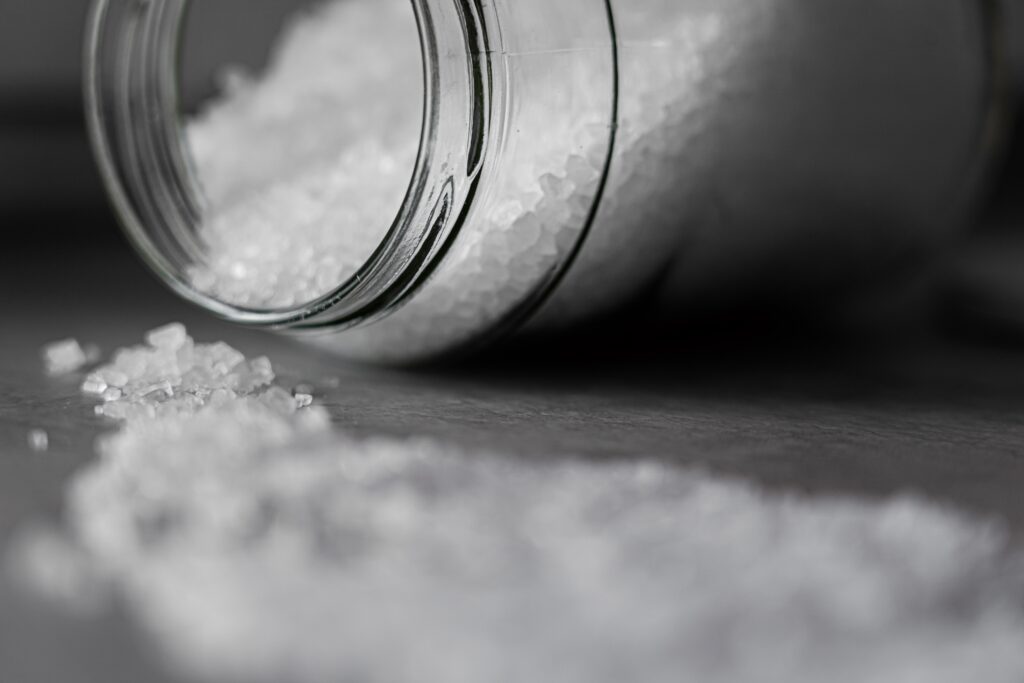
In the rich tapestry of diverse cuisines, various types of salt play a crucial role in enhancing flavors and preserving food. Among these, coarse salt stands out as a favorite among culinary enthusiasts. Known for its striking larger and more rustic texture, coarse salt is derived from a meticulous process of evaporating seawater or salt flats, where sunlight works to eliminate moisture. This process causes sodium chloride to clump together, forming irregular crystals that can reach sizes of up to three centimeters in diameter.
The robust granulation of coarse salt not only provides it with an inviting, rustic aesthetic but also delivers significant advantages during food preparation. This characteristic is a key reason it has become a staple for barbecue aficionados. Coarse salt’s ability to dissolve gradually on the meat’s surface imparts a deep, well-rounded flavor while contributing to the formation of a tantalizing caramelized crust as it cooks. Additionally, coarse salt is commonly utilized in curing processes, effectively drawing out moisture to aid in preserving meat and fish.
Thus, when we speak of coarse salt, we’re referencing more than just an ingredient; we’re embracing a culinary tradition that enriches and elevates gastronomic experiences. It has become an essential component in the kitchens of barbecue lovers and anyone who values authentic flavors.
Refined Salt
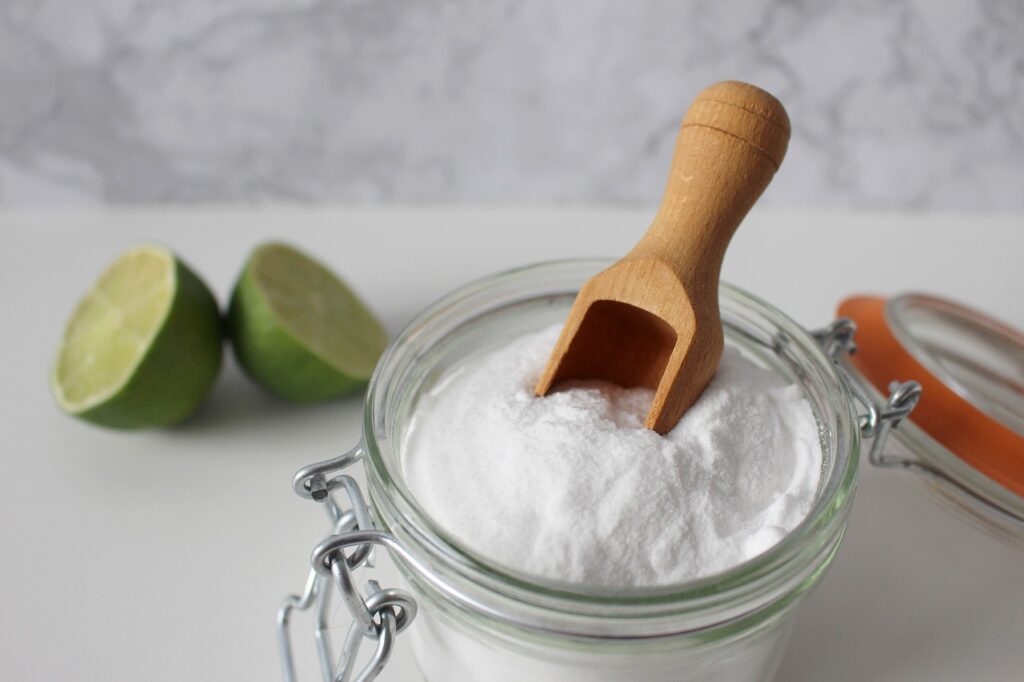
The production of refined salt begins with the extraction of brine, a concentrated saltwater solution. Before the formation of salt crystals, this brine undergoes several crucial purification steps.
Initially, it is meticulously filtered to eliminate impurities and contaminants, allowing only the purest sodium chloride to remain in the mixture. Following this filtration, the brine enters a vacuum evaporation process. This method is vital as it lowers the boiling point of water, enabling the extraction of salt without compromising its quality.
As the water gradually evaporates, the solution becomes concentrated, leading to the formation of small, fine-textured salt crystals, perfect for everyday use. Once the crystals are harvested, they are treated and packaged for distribution, ensuring that the refined salt reaching consumers is a product of meticulous purification and preparation, making it ideal for culinary purposes.
Maldon Salt
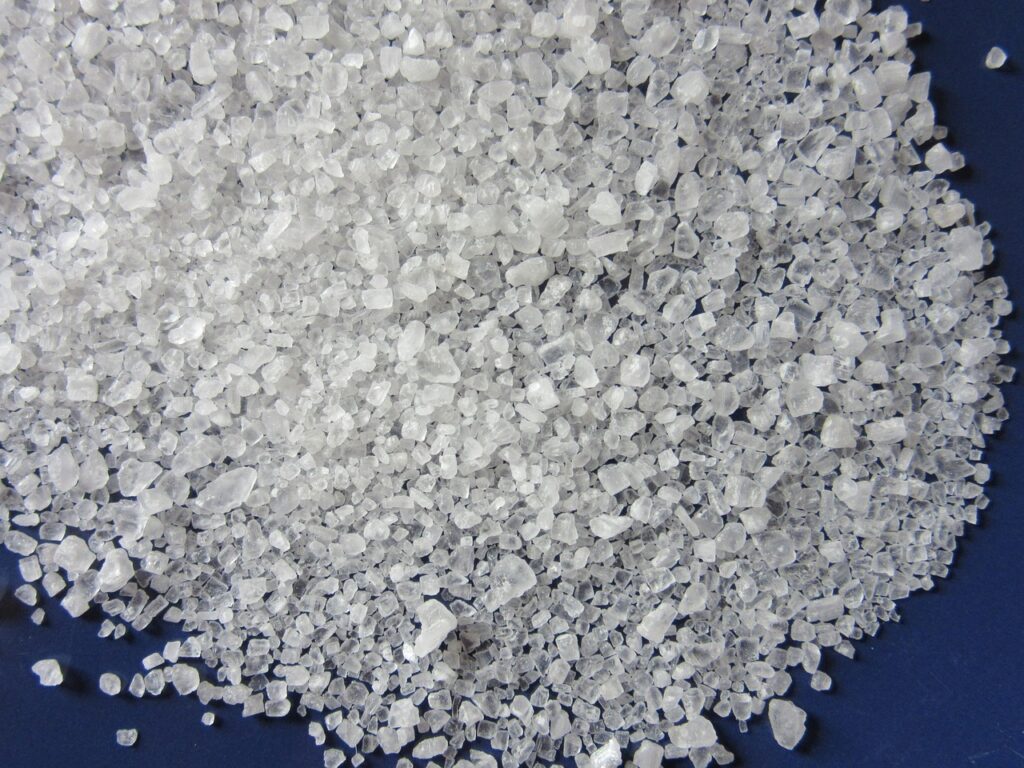
Maldon salt, hailing from the picturesque Essex region of England, is celebrated as one of the finest salts available and is highly sought after in haute cuisine for its unique attributes. Its esteemed reputation stems from its distinct flavor and appealing visual presentation, which enhance sophisticated dishes.
The delicate, brittle texture of Maldon salt crystals offers a delightful sensory experience, crackling gently in the mouth and releasing a burst of flavor that strikes a perfect balance between intensity and subtlety. Known for its pure maritime essence, this sea salt evokes the aromas of the coastal beaches and the deep ocean, making it a favorite among acclaimed chefs seeking to elevate their culinary creations. It dissolves rapidly on the palate, enhancing and intensifying the flavors of various dishes, including fresh salads, grilled meats, and even desserts, adding a remarkable finishing touch.
Equally important is the visual presentation of Maldon salt; its irregular white crystals resemble tiny snowflakes, contributing a striking aesthetic to dishes and making them more enticing. For these reasons, Maldon salt transcends being a mere condiment; it is a treasured ingredient that transforms an ordinary meal into an unforgettable gastronomic journey.
Flor De Sal
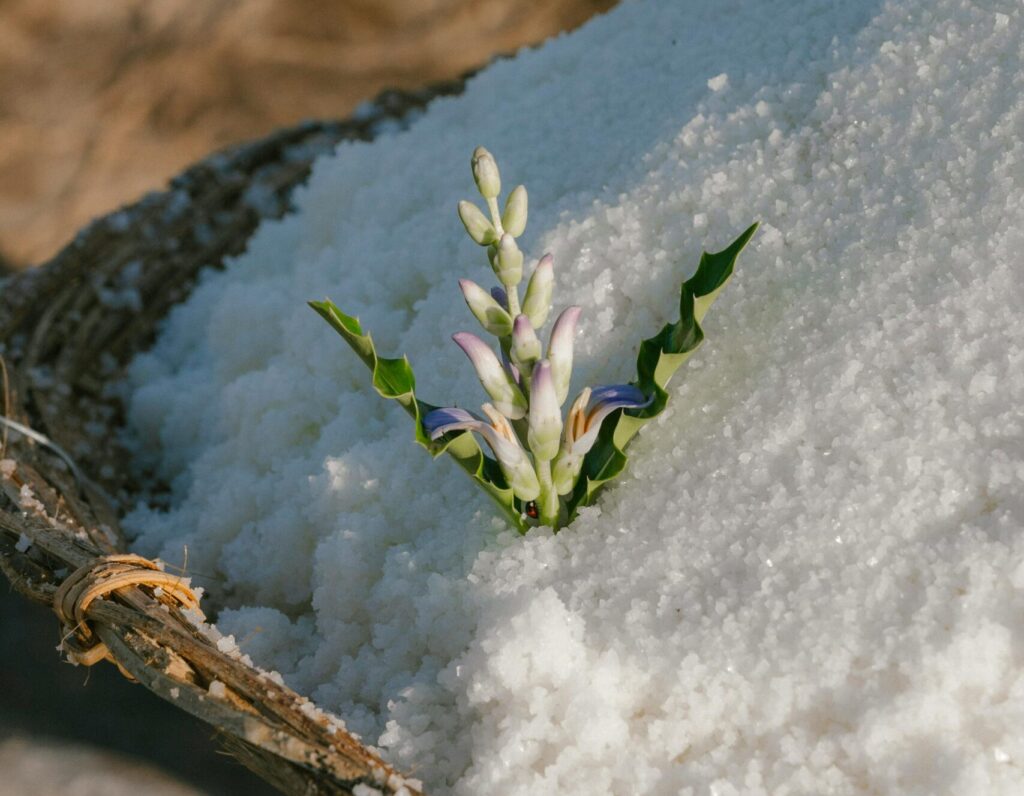
Originating from the traditional salt pans of France, Fleur de Sel is a coveted delicacy that requires specific climatic conditions for its production. This delicate salt results from a meticulous process that demands ample sunshine, gentle breezes, and low humidity—critical elements for forming its fine crystals.
Harvesting is done by hand, with skilled producers carefully collecting the crystals that surface as seawater evaporates, ensuring the preservation of their unique properties. Once harvested, Fleur de Sel crystals are naturally dried in the sun, a process that enhances their crunchy texture and distinctive flavor. This careful drying is crucial, as it maintains the salt’s flavor nuances and all its organoleptic qualities before bottling.
Highly prized in gastronomy, Fleur de Sel is often used by renowned chefs to elevate dish flavors. To fully appreciate its characteristics, it’s best added to dishes after cooking, allowing the crystals to dissolve slowly for an explosion of flavor in each bite. In this way, Fleur de Sel not only enriches culinary creations but also adds a touch of sophistication and aesthetic appeal to presentations. It is a true culinary gem, cherished by gourmets and aficionados of authentic tastes.
Pink Salt

Himalayan pink salt is a captivating substance with a rich history, offering a natural alternative to traditional table salt. This unique salt originates from a sea fossilized thousands of years ago within the grand Himalayan Mountains, resulting from a geological environment that guarantees its purity. Unlike conventional salts, pink salt is not subjected to chemical processing, allowing it to retain its natural form and beneficial properties.
Rich in essential minerals, Himalayan pink salt contains around 80 trace elements vital for the body’s proper functioning. Key minerals such as sodium help regulate fluid balance, while potassium, magnesium, calcium, and iron contribute to various physiological processes. The diverse mineral profile enhances its flavor and turns it into a nutrient-rich dietary supplement.
The salt’s distinctive pink hue derives from iron oxide and manganese, which enhance its appearance and signify its mineral abundance. Each crystal exhibits a unique shade, making it a visually appealing ingredient cherished in kitchens and dining rooms worldwide.
Beyond its culinary uses, Himalayan pink salt has garnered attention in various health and wellness traditions. Many advocate its potential to aid in detoxification, maintain electrolyte balance, and even improve sleep quality. It’s frequently incorporated into baths and holistic therapies. For these reasons, Himalayan pink salt is not merely a flavorful addition; it also offers potential health benefits, making it a valuable enhancement to our daily lives.
Black Salt
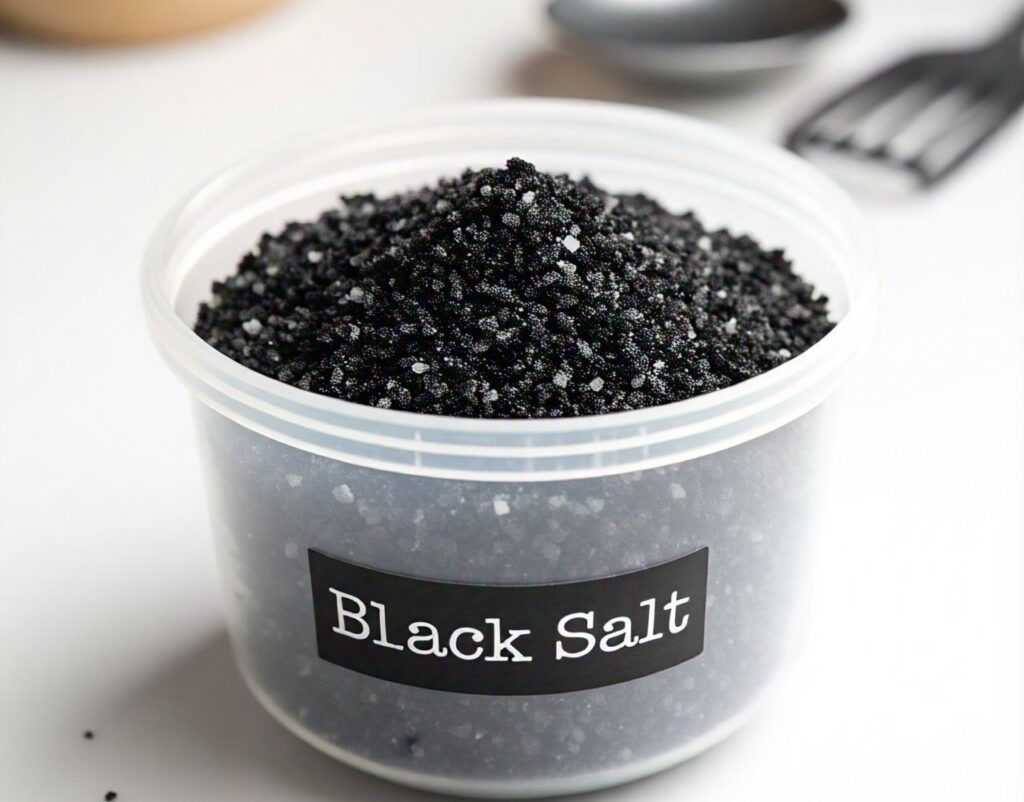
Indian black salt, or Kala Namak, is a revered ingredient with deep roots in the culinary and medicinal traditions of India and Pakistan. Its allure lies not only in its striking dark hue but also in its fascinating history and the intricate production process it undergoes. To create Kala Namak, skilled artisans blend Himalayan salt with a carefully curated selection of local herbs and fruits.
This traditional technique involves several meticulous steps that may take several days to complete. During production, the salt is subjected to calcination and heating, during which the herbs and fruits are incorporated. This unique process imparts a distinctive smoky flavor along with a subtle sulfurous note. Beyond enhancing the salt’s texture and taste, it also bestows beneficial properties prized in holistic practices.
In Indian cuisine, Kala Namak finds frequent use, particularly in vegetarian dishes, where its distinctive flavor elevates salads, chutneys, and even fruit preparations. Additionally, it plays a role in Ayurvedic medicine, being regarded as beneficial for digestion and detoxification. Thus, Kala Namak serves not merely as a seasoning but as a cultural artifact that embodies the rich heritage of the region’s culinary and medicinal history.
Light Salt
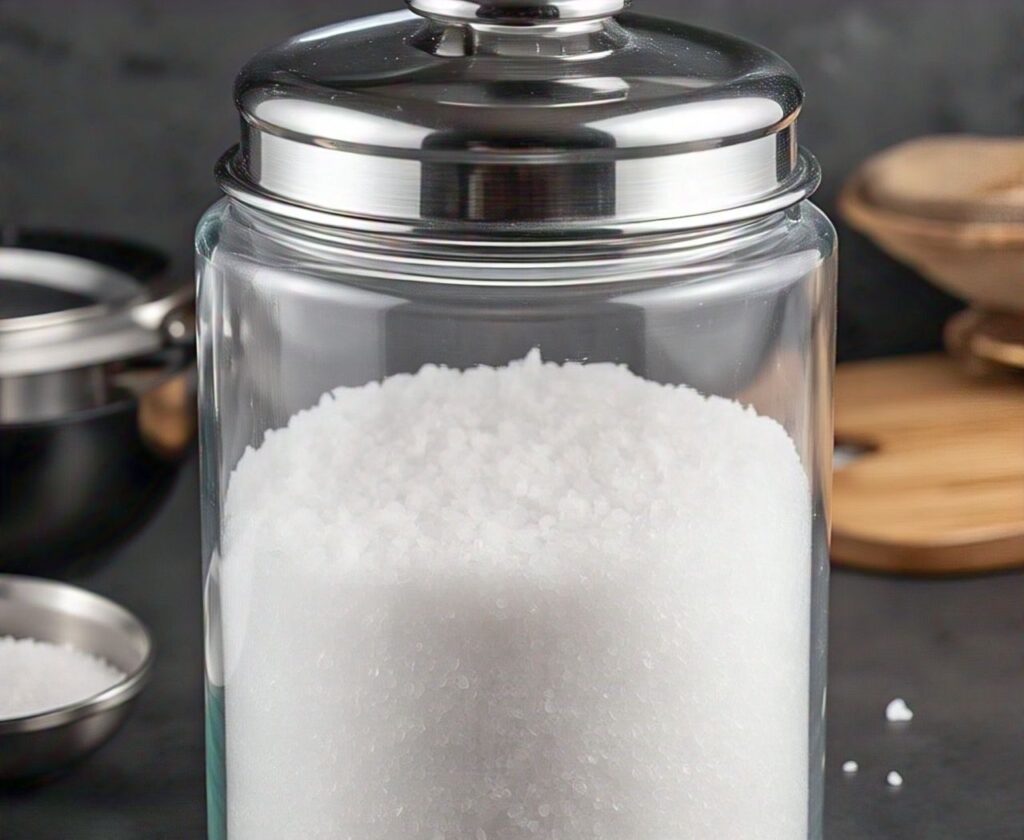
Light salt is increasingly recognized as a beneficial alternative for individuals with high blood pressure due to its distinct composition compared to regular salt. Traditional table salt is primarily made up of sodium chloride (NaCl), whereas light salt contains only 50% sodium chloride. The other half consists of potassium chloride (KCl), a mineral known for its various health advantages, particularly for those managing their blood pressure.
One of the key appeals of light salt is its milder flavor, making it versatile for a wide range of dishes without sacrificing taste. This quality makes light salt an attractive choice for anyone aiming to lower their sodium intake while still enjoying flavorful meals. Additionally, potassium chloride is essential for physical well-being; it helps reduce water retention in the body. Its presence aids in balancing sodium levels, potentially alleviating swelling and other issues related to fluid retention.
For individuals with high blood pressure and those pursuing a healthier lifestyle, light salt presents an excellent option. Its unique composition not only enhances flavor but also supports a balanced diet and promotes cardiovascular health.
Bottom Line
The history of salt is captivating, stretching back thousands of years. Vital to human existence, salt not only preserves food but has also shaped the economies and politics of numerous civilizations.
Coarse salt, recognized for its large crystals, is commonly used in cooking, particularly for meat preservation. It is obtained through the evaporation of seawater or the extraction of natural deposits. In contrast, refined salt, which is often found in supermarkets, undergoes a purification and grinding process, yielding fine crystals. While popular, this refinement can strip away beneficial minerals. To address potential nutritional deficiencies, iodized salt was introduced. Maldon salt, originally from England, features crunchy flakes ideal for finishing dishes and is harvested by hand, making it a favorite among top chefs. Fleur de Sel, a delicacy meticulously harvested from the surface of salt flats, is mineral-rich and enhances flavors before serving. Pink salt, sourced from the Himalayas, is celebrated for its mineral content and is often promoted as a health food, also being used in spa treatments. Black salt, or Kala Namak, enjoys popularity in Indian cuisine for its umami flavor and purported digestive benefits, resulting from its unique mineral crystallization. Lastly, light salt, which contains lower sodium levels, serves as an alternative for those seeking to reduce their salt intake, though it’s advisable to consume it under supervision to prevent adverse effects.
The variety of salts not only showcases their distinct characteristics but also reflects the rich history of their use, underscoring their essential roles in cooking and health.
Did you like this article?
I hope this article has helped you understand about the types of salt for cooking. To learn more, take a look at Is It Safe To Wash Meat Before Cooking?
Leave a comment below and share our content. Help our community grow by following our social media on Spotify, Instagram, Facebook, YouTube, and TikTok. And stay up to date with the news from the world of Gastronomy.
Don’t forget to tag @gastrovinoacademy on Instagram and hashtag it #gastrovinoacademy.
Cheers 🍷


